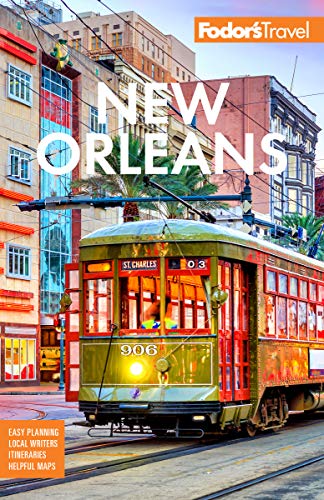New Orleans Itineraries
Day 1: The French Quarter
Start by getting to know the city's most famous neighborhood. The café au lait and beignets at Café du Monde are a good place to begin, followed by a stroll around Jackson Square and St. Louis Cathedral. Cross the seawall and take in the views of the Mississippi River from Woldenberg Riverfront Park. Wander along North Peters Street to the shops and market stalls in the French Market, followed by a walk in the mostly residential Lower Quarter and Faubourg Marigny. After lunch, explore the antiques stores and art galleries on Royal and Chartres streets, winding it all up with a cocktail in a shady courtyard—try Napoleon House, an atmospheric bar and café that makes a mean Pimm's Cup, or French Quarter mainstay Pat O'Brien's. Save Bourbon Street for after dinner (which you should eat at one of the Quarter's esteemed restaurants).
Day 2: The Garden District and Uptown
The St. Charles Avenue streetcar rumbles past some of the South's most prized real estate; relax in one of the antique wooden seats and admire the scenery on the way to leafy Audubon Park. In the park you can follow the paved footpath to the Audubon Zoo, keeping an eye out for the zoo's white tiger and rare white alligators. Board an inbound Magazine Street bus near the zoo entrance and take it a couple of blocks past Louisiana Avenue, where a number of restaurants, some with sidewalk tables, are clustered. Continue along Magazine to Washington Avenue and head left through the Garden District. Prytania Street, just past Lafayette Cemetery No. 1 (Anne Rice fans, take note), is a good axis from which to explore the neighborhood's elegant side streets. Catch a downtown-bound streetcar on St. Charles, or wrap up the afternoon shopping and dining on Magazine Street.
Day 3: Art, History, and Culture
Dedicate one day to a deeper exploration of the city's cultural attractions. Art lovers shouldn't miss the Warehouse District, where a pair of fine museums—the Ogden Museum of Southern Art and the Contemporary Arts Center—anchor a vibrant strip of contemporary art galleries, most of which feature local artists. History buffs will want to check out the National World War II Museum, also in the Warehouse District, and the Historic New Orleans Collection in the French Quarter, which hosts changing exhibits in a beautifully restored town home. The Louisiana State Museum Cabildowas the former seat of Spanish colonial power in New Orleans and is now a museum that guides visitors through the history of the land that is now Louisiana.
Day 4: Remembering Katrina
It may strike some as macabre, but touring neighborhoods devastated by Katrina's floodwater has become a ritual for many visitors, much the same as pilgrimages to Lower Manhattan's Ground Zero. You can opt for a guided bus tour, which takes you to Lakeview and the infamous 17th Street Canal levee breach; some companies also travel to the Lower Ninth Ward and Chalmette. After a somber tour of Hurricane Katrina's destruction, take heart by looking to the many signs of renewal and rebirth. City Park, which sustained extensive wind and flood damage, still holds its stately botanical gardens; nearby stands the venerable New Orleans Museum of Art and the adjacent Sydney and Walda Besthoff Sculpture Garden.Wind down from the day with dinner and live music downtown at one of the clubs on Frenchmen Street, in the Faubourg Marigny neighborhood, where the city's inexhaustible spirit parties on.
Day 5: Head Out of Town
Consider a day trip out of town to explore Cajun Country, take a guided swamp tour, or take a somber and educational visit to one of the region's plantation homes. Although swamp tours may sound hokey, they're actually a good way to see south Louisiana's cypress-studded wetlands (and get up close and personal with the alligators and other critters that live there). Continue the nautical theme in the evening with a ride to Algiers Point aboard the Canal Street Ferry for lovely sunset views of the New Orleans skyline. Of the many antebellum mansions between New Orleans and Baton Rouge, the best to visit is Whitney Plantation, the only plantation that has honored its horrific legacy by becoming a museum fully dedicated to the history of slavery.




